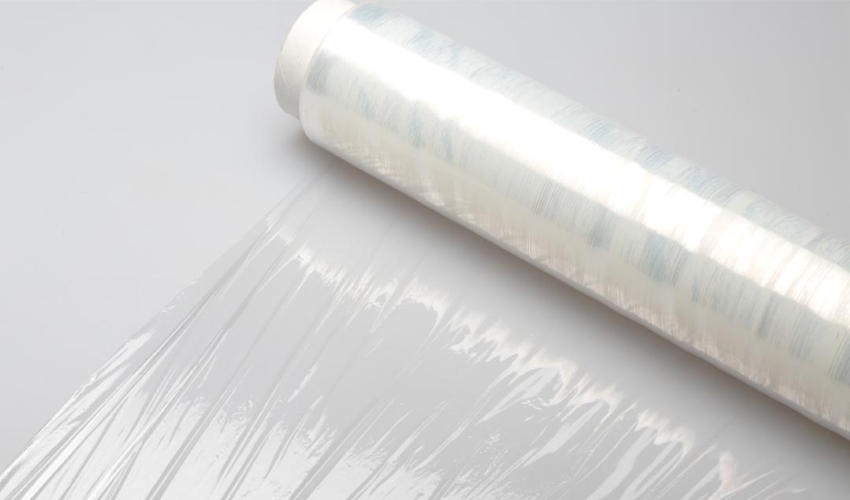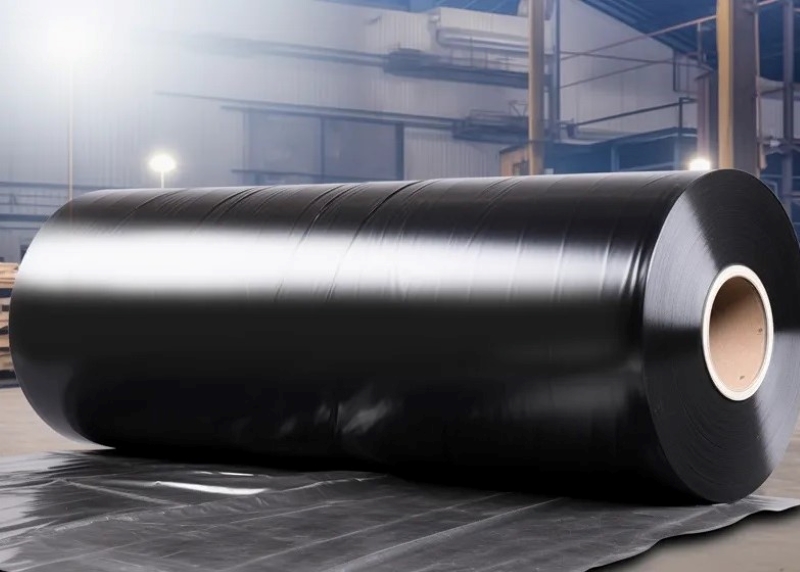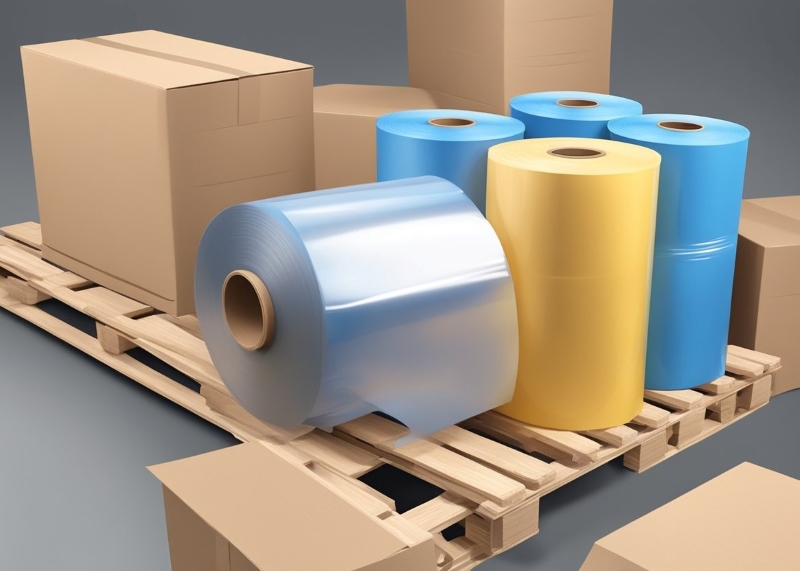
Stretch film density refers to the mass per unit volume of the film, a crucial factor in determining its performance in various packaging applications. Understanding stretch film density is vital because it affects the strength, elasticity, and overall efficacy of the film in securing loads during transport. For example, mdo stretch film typically has a higher density compared to standard polyethylene stretch film, which provides enhanced strength and resistance to punctures, making it ideal for heavier or more delicate loads. In this article, we will delve into the significance of stretch film density, exploring how it influences factors such as wrap sizes and packaging efficiency. Additionally, we will provide insights into the stretch film density formula and density charts, and discuss the technical data sheets associated with stretch films. By the end, you will have a comprehensive understanding of how density impacts your packaging choices and solutions. Stretch film density, around 0.916–0.919 g/cm³, measures the mass per unit volume of LLDPE film used for packaging and securing items.
The stretch film density is a critical metric used to evaluate the performance characteristics of stretch films. The formula to calculate stretch film density is:
Density= Mass of the Film (g)/Volume of the Film (cm³)
where mass is measured in grams and volume in cubic centimeters. This equation helps manufacturers and users understand how much material is packed into a given volume, influencing factors such as strength and stretchability.
Volume is calculated as:
Volume=Width (cm)×Length (cm)×Thickness (cm)
Example:
For a film roll weighing 5 kg (5000 g), with dimensions 50 cm width, 1000 m length, and 0.002 cm thickness:
Volume=50×100000×0.002=10000 cm³
Density=5000/10000=0.5g/cm³
This formula helps in verifying the quality and material consistency of the stretch film. This result indicates a standard density for stretch films, highlighting the importance of knowing the specific density when making packaging decisions. Understanding the stretch film density helps in choosing the right film for specific applications, ensuring efficient packaging and protection of goods.
Several factors can influence the density of stretch film, including:
The density of stretch film typically ranges from 0.9 to 1.1 g/cm³, depending on the specific formulation and thickness. Understanding what is the density of stretch film is crucial for selecting the appropriate type for various applications, ensuring optimal performance. For example, triwrap stretch film is engineered with a specific optimized density that balances strength and stretchability, making it ideal for securing loads.
The stretch film density chart serves as a valuable reference for comparing the densities of various types of stretch films, allowing users to make informed decisions based on their packaging needs. Below is a general overview of common materials used in stretch films, along with their typical density ranges:
| Material Type | Density Range (g/cm³) | Typical Applications |
|---|---|---|
| LDPE | 0.91 - 0.93 | General wrapping, light loads |
| LLDPE | 0.92 - 0.95 | Heavy-duty applications, pallet wrapping |
| HDPE | 0.94 - 0.97 | High-strength applications, industrial use |
| VLDPE | 0.88 - 0.90 | Lightweight wrapping, food packaging |
| NANO | 0.90 - 0.92 | Advanced applications, superior strength-to-weight ratio |
| Film Grade | Density (g/cm³) | Characteristics | Common Applications |
|---|---|---|---|
| LDPE | 0.910 - 0.925 | Flexible, clear, lightweight, less durable | General wrapping needs |
| LLDPE | 0.915 - 0.935 | Greater strength, stretchability, balanced performance | Securing heavy loads |
| HDPE | 0.941 - 0.965 | Highest density, strong, tear-resistant | Industrial applications |
| VLDPE | 0.880 - 0.910 | Lower density, suitable for lightweight applications | Food packaging and similar uses |
| NANO | Varies (advanced tech) | Enhanced strength, lower material usage, superior performance | Demanding applications |
The stretch film density is one of the crucial metrics that can be found on a stretch film technical data sheet. These sheets are essential tools for evaluating the characteristics and high performance of stretch films, ensuring that users can make informed decisions about the products they choose for packaging.

Technical data sheets (TDS) provide comprehensive information about stretch films, helping manufacturers and users understand the specifications and capabilities of the materials. They are vital for:
A typical stretch film technical data sheet will include several key parameters that influence performance:
Interpreting a technical data sheet involves understanding the significance of each parameter:
By effectively using the information provided in a stretch film technical data sheet, users can ensure they select the most suitable film for their specific packaging applications, ultimately enhancing efficiency and product protection.
Understanding stretch film density is essential when selecting the appropriate wrap sizes for various packaging needs. Different wrap sizes play a critical role in ensuring the effectiveness of the film in protecting and securing loads during transportation and storage.
Stretch films come in a variety of wrap sizes, typically measured in width and thickness. Common widths range from 12 inches to 80 inches, while thickness can vary from 10 microns to 80 microns or more. The choice of wrap size, along with the stretch film micron thickness, should align with the intended application, as the micron thickness influences the film’s strength and performance.
The relationship between stretch film density and wrap size is critical for load stability. A higher density film typically offers greater strength, allowing for thinner wraps to be used effectively. This can lead to benefits such as:
Conversely, using a wrap size that is too thin for the load can lead to inadequate support, increasing the likelihood of damage or loss.
Different wrap sizes are suited for various applications, including:
By considering the stretch film density alongside the available wrap sizes, users can select the most effective film for their specific packaging needs, ensuring optimal protection and stability during transportation and storage.
Stretch wrap packaging plays a pivotal role in securing products for transport and storage, and understanding stretch film density is crucial for optimizing these packaging solutions.
The density of stretch film significantly impacts its performance in packaging applications. Higher density films tend to provide greater strength and durability, making them ideal for heavier or more fragile items. The choice of stretch film density influences:
When it comes to protecting products during transport, stretch film density plays a vital role in several ways:
By understanding and leveraging stretch film density, businesses can enhance their packaging strategies, ensuring that products are effectively protected during transport while optimizing material usage. This leads to improved efficiency, reduced costs, and increased customer satisfaction.
Stretch wrap machines are essential tools in modern packaging operations, enabling efficient application of stretch film to secure products for transport and storage. Understanding stretch film density is crucial for optimizing machine performance and ensuring effective wrapping.

There are several types of machines designed to apply stretch wrap, each suited for different packaging needs:
The stretch film density significantly influences the performance and efficiency of stretch wrap machines in several ways:
When selecting a stretch wrap machine, consider the following recommendations based on stretch film density:
By understanding how stretch film density impacts the choice and operation of stretch wrap machines, businesses can improve their packaging processes, leading to enhanced efficiency, reduced material costs, and better product protection.
The selection of stretch wrap rolls is crucial for effective packaging, as various roll sizes, stretch film density, and stretch wrap roll weight directly influence usability, weight, and overall performance in different applications.
Stretch wrap rolls come in a range of sizes, typically defined by width, length, and thickness. Common widths range from 12 to 80 inches, and thickness can vary from 10 to 80 microns or more. The density of the film affects both the weight of the rolls and their usability:
When selecting a stretch wrap roll, consider the following tips to ensure optimal performance based on your application needs:
Understanding stretch film density provides several benefits when selecting stretch wrap rolls:
A thorough understanding of stretch film density and its impact on roll size, weight, and usability can significantly enhance your packaging processes, leading to improved protection, cost efficiency, and overall operational effectiveness.
The density of stretch film depends on the type of material used, primarily variations in polyethylene.

Here’s a breakdown:
Linear Low-Density Polyethylene (LLDPE)
The most common material for stretch films, LLDPE has a density of 0.916–0.919 g/cm³. Its low density contributes to its flexibility, stretchability, and cost-effectiveness.
Low-Density Polyethylene (LDPE)
Slightly higher density than LLDPE, around 0.920–0.930 g/cm³. LDPE is less stretchable but offers higher puncture resistance and rigidity.
High-Density Polyethylene (HDPE)
HDPE films are much denser, typically 0.940–0.970 g/cm³, making them stronger and more rigid but less stretchable and suitable for stretch wrapping.
Blended Films
Some stretch films use blends of polyethylene to balance properties, with densities ranging from 0.918–0.930 g/cm³, depending on the mix.
The differences in density directly impact performance factors like stretchability, durability, and cost, allowing users to select the right film for specific applications.
The density of stretch film varies depending on its type, material composition, and intended application. Below is a detailed explanation of the density differences among the nine common types of stretch films:
Hand Stretch Film:
Typically made from LLDPE, its density ranges between 0.916–0.919 g/cm³, optimized for lightweight, manual applications with sufficient flexibility.
Machine Stretch Film:
Often slightly denser than hand stretch film (0.917–0.920 g/cm³) to provide added durability and strength for automated applications, ensuring consistent wrapping.
Color Stretch Film:
Adding color pigments slightly increases density, usually ranging from 0.918–0.922 g/cm³. The additional weight does not significantly impact stretchability but enhances opacity.
Bundling Stretch Film:
Designed for smaller loads, this film has a density similar to hand stretch film (0.916–0.919 g/cm³) but is often thinner, ensuring ease of application.
Mini Stretch Film:
With reduced width, its density remains within the 0.916–0.919 g/cm³ range. The compact design prioritizes flexibility over heavy-duty performance.
Pre-Stretch Film:
Pre-stretched during manufacturing, it uses less material, resulting in a density on the lower end of the range (0.915–0.918 g/cm³) while maintaining functionality.
VCI Stretch Film:
Volatile Corrosion Inhibitor (VCI) additives slightly increase the density to 0.920–0.925 g/cm³, providing enhanced corrosion protection for metal goods.
UVI Stretch Film:
UV inhibitors add density, with typical values between 0.920–0.926 g/cm³, making it suitable for outdoor use by resisting sunlight degradation.
Breathable Stretch Film:
Engineered with perforations for airflow, it generally retains a density of 0.916–0.919 g/cm³, balancing material integrity and ventilation capabilities.
PLA Stretch Film:
Made from polylactic acid (PLA), a biodegradable material derived from renewable resources, PLA stretch film has a density of 1.24–1.27 g/cm³, higher than traditional polyethylene films. It offers eco-friendly packaging solutions with good clarity and stretchability.
The slight variations in density among these types stem from added features, such as pigments, inhibitors, or unique manufacturing processes. Understanding these differences helps in selecting the ideal stretch film for specific applications while maintaining optimal performance.
Stretch films come in various specifications tailored to specific packaging needs, with differences in density based on thickness, width, and length. Below is a detailed analysis of common stretch film specifications and how their densities differ:
The density of stretch film across different specifications varies due to thickness, width, length, and material composition. Thicker films and those with additives generally have higher densities, while pre-stretched and thinner films exhibit lower densities. Understanding these density variations ensures proper selection of stretch film for specific packaging applications, optimizing performance and cost-efficiency.
Stretch film, widely used for securing products during transportation and storage, comes with various specifications to meet different needs. These specifications often include thickness, width, stretch capacity, and resistance to puncture or tear. The most common range of thickness lies between 12 to 35 microns, allowing for a balance between strength and cost-efficiency. The width typically ranges from 400 mm to 500 mm, catering to different pallet sizes and shapes. Stretch capacity can vary, with some films capable of stretching up to 500% of their original length, providing excellent coverage and stability for loads of various dimensions. Additionally, modern stretch films are engineered to offer superior cling, puncture resistance, and clear optics for easy identification of products.
The strength of stretch film is a crucial factor in determining its effectiveness in securing loads. It is primarily gauged by its ability to resist punctures, tears, and stretches without breaking. High-quality stretch films are designed to withstand significant forces and are capable of securing loads up to thousands of pounds. The exact strength, however, depends on the material composition, thickness, and manufacturing technology. Innovations in polymer blends and extrusion techniques have significantly enhanced the toughness, allowing the film to maintain integrity even under stress and strain during transportation and handling.
Stretch film is predominantly made from polyethylene (PE), specifically linear low-density polyethylene (LLDPE). LLDPE is chosen for its outstanding stretching properties, durability, and clarity. It also has a superior resistance to punctures and tears compared to other materials. The molecular structure of LLDPE allows the stretch film to be lightweight yet capable of providing strong and secure load stability. Additionally, variations of stretch films may incorporate different blends of materials, including recycled content, to enhance specific properties like stretchability, cling, and environmental sustainability.
The thickness of PE (polyethylene) stretch film is an important parameter that impacts its durability and load-holding capacity. Typically, the thickness ranges from 12 microns (48 gauge) for light-duty applications to 35 microns (140 gauge) for heavy-duty needs. The choice of thickness depends on the load weight, type of goods, and the level of protection required. Thinner films are generally used for less demanding applications, where minimal stretch and load stabilization are needed, while thicker films are preferred for heavier, irregular loads or where higher performance and protection are required. It’s essential to select the appropriate thickness to ensure optimum performance and cost efficiency.
The weight of stretch film can be calculated using its dimensions and density. First, determine the film’s dimensions: width, length, and thickness (in microns or gauge). Multiply these values to calculate the film’s volume. For example, the formula is:
Volume=Width (m)×Length (m)×Thickness (m)
Next, multiply the volume by the material density, typically around 0.92 g/cm³ for low-density polyethylene (LDPE), the most common material for stretch films. Convert the result to kilograms for practical use.
For pre-measured rolls, the weight may also include the cardboard core, which can vary but is usually around 0.5–1.5 kg. Knowing the film’s weight helps estimate usage and optimize packing efficiency. Accurate calculations are essential for industries managing high-volume wrapping to minimize waste and control costs.
The strength of stretch film depends on its thickness, material, and manufacturing process. Most stretch films are made from linear low-density polyethylene (LLDPE), offering a balance of elasticity and durability. Strength is measured in terms of tensile strength (resistance to pulling) and puncture resistance.
Typical tensile strength ranges from 10 to 30 MPa, depending on the film grade and thickness. For heavy-duty applications, thicker films or multi-layer designs are used to enhance durability.
Stretch films also exhibit “holding force,” which determines their ability to secure loads. High-performance films can stretch while maintaining their integrity under significant tension, making them ideal for wrapping pallets in commercial settings. When considering film strength, density plays a role in balancing weight and performance, as denser materials may slightly increase durability but affect cost and flexibility.
Stretch wrap, made primarily from LLDPE, can stretch between 100% and 300% of its original length, depending on the grade and application. For example, a stretch film that is 1 meter long can extend to 3 meters in high-performance films.
Stretching capability is categorized into pre-stretch (before application) and elongation at break (maximum stretch before tearing). Pre-stretch capabilities usually range between 150% and 250%, commonly used for hand-wrapping or machine wrapping.
The stretching process improves the film’s holding force, ensuring tight wrapping and securing of goods. However, over-stretching can compromise the film’s integrity. Density affects the stretchability indirectly; films with higher density are often less elastic but may provide better puncture resistance. Selecting the right balance of density and elasticity ensures optimal performance in packaging applications.
The weight of stretch film depends on its dimensions, thickness, and material density. For example, a roll measuring 500mm width, 1500m length, and 17 microns thickness weighs approximately 6–7 kg, excluding the core.
To calculate, multiply the volume (length × width × thickness) by the material density (approximately 0.92 g/cm³ for LLDPE). Adjust for unit conversions to ensure accurate results in kilograms.
Pre-stretch films weigh less than standard films due to reduced material usage, even for the same roll dimensions. High-density films might weigh slightly more for equivalent dimensions, providing added strength and puncture resistance. Understanding film weight is essential for estimating usage, transportation logistics, and cost management in packaging operations.

My name is James Thompson, and I’m the editor of this website dedicated to Stretch Film, Pallet Wrap, and Stretch Wrap products.
My passion for packaging began when I noticed the challenges companies face in securing their products efficiently for transportation and storage. This inspired me to delve deep into the world of stretch films and pallet wraps, exploring the latest technologies and best practices.
I aim to provide valuable insights, practical tips, and up-to-date industry trends to assist you in making informed decisions. Whether you’re a small business owner or part of a large corporation, my goal is to support you in optimizing your operations and ensuring your products reach their destination safely.
Thank you for visiting, and I look forward to accompanying you on your journey toward better packaging solutions.
Comments are closed